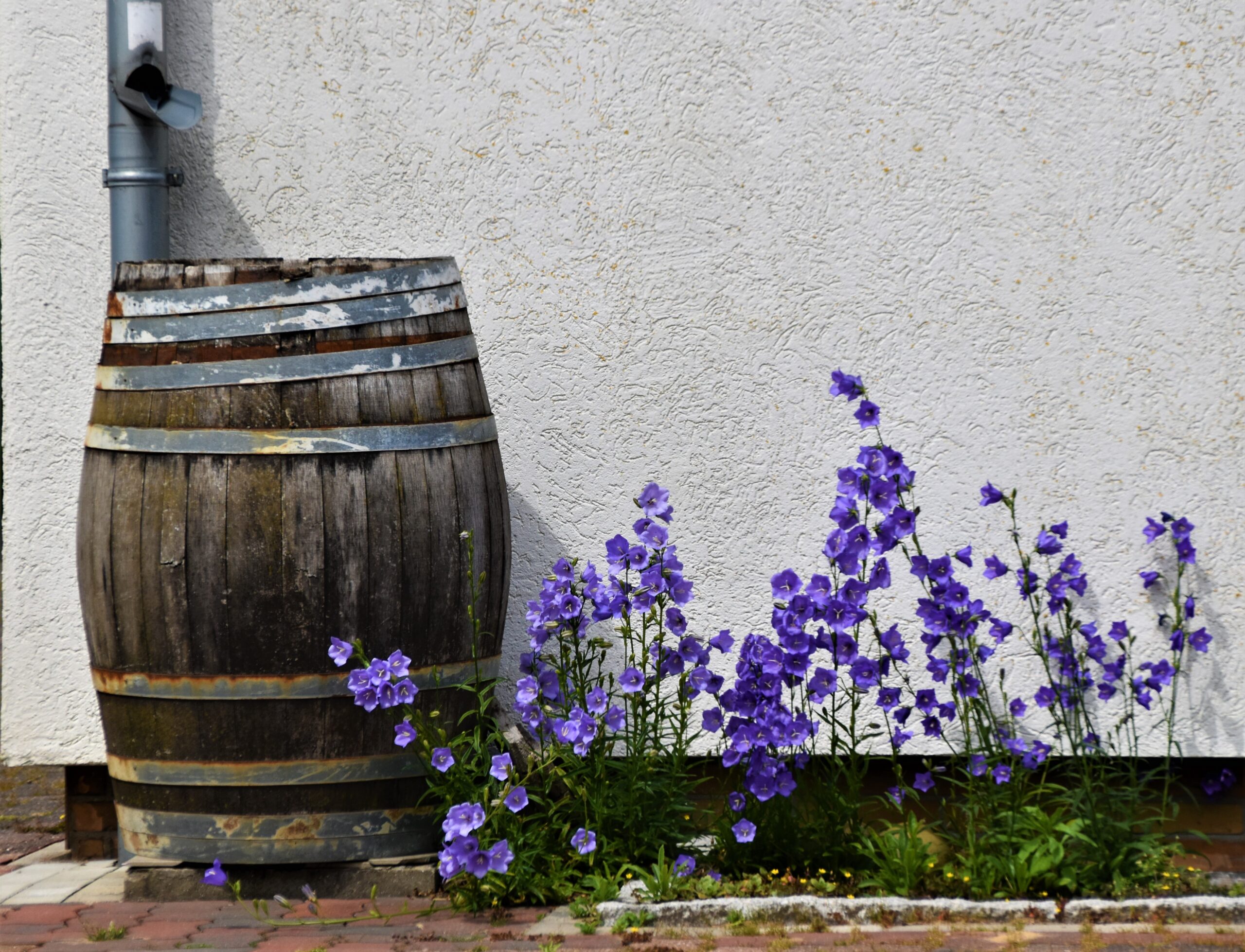Can I Water Vegetables With My Rain Barrel Water?

NOTE: Even though NM is an arid state – we do occasionally get enough rain to make a rain barrel appealing. If you are considering adding one, here are a few guidelines about using the water.
By Joan Allen Originally published by the UConn Home & Garden Education Center May 18, 2018
Collection of rainwater from roofs using rain barrels is growing in popularity because of its many environmental and practical benefits. It can help the environment by diverting water that might contain contaminants away from storm drains and the natural bodies of water that those empty into. Depletion of well water can be a benefit when this non-potable water is used instead of the tap for things like washing cars, irrigation of plants, and flushing toilets. If you’re on a city/public water system, it can save money to use rainwater where you can, too. But is using rainwater to irrigate vegetables and fruits safe? Are there contaminants in it that could make people sick? Let’s take a look at what’s been studied.
A few universities in the U.S and abroad have done some work to look at potential contaminants in roof run-off water including heavy metals like zinc, copper, lead and others as well as bacteria such as E. coli and other pathogens. Testing done so far has shown minimal risk from these, but there is some. And of course, it depends on the type of roofing material, the environment (i.e. acid rain, urban vs. rural, etc.) and other factors. In one study, most of the metals tested the same in rain barrel water as in rainwater before it hit the roofs, so little to no concern there. One exception was zinc, and elevated levels could lead to build up of this element in soils. At high enough levels, this can cause injury to plants and those plants should not be consumed (1). Monitor for this by having the soil tested.
While risk is low, there were a few samples in studies (1, 2) where E. coli or total coliform bacterial levels exceeded official standards for some uses. Rain barrel water should NEVER be used for potable purposes such as drinking water, cooking or washing. Where do the bacteria in run-off come from? The main sources would be fecal matter from animals such as squirrels and birds that land and move around on the roof.
But if you’d like to water your vegetable garden with rain barrel water, are there ways to do it safely?
Dr. Mike Dietz, Assistant Extension Educator at UConn with expertise in water management recommends “not using roof water on anything leafy that you are going to eat directly. It would be OK to water soil/plants where there is no direct contact.” This is consistent with recommendations from other experts who suggest applying the water directly to the soil and avoiding contact with above-ground plant parts. An ideal set-up would be to hook up a drip irrigation system to your rain barrel(s). Pressure will be improved when they are full and if they are elevated. A full rain barrel can be pretty heavy, at about 500 lbs. for a 55 gallon unit, so make sure they are on a solid and stable base such as concrete blocks.
If possible, and this is done in larger collection systems automatically, don’t collect the ‘first flush’ of water off the roof. This would be the first few gallons. In a ¼” rainfall as much as 150 gallons can be collected from a 1000 ft roof surface (3). The first water to run off tends to have higher concentrations of any contaminants because of them building up on the roof since the previous rainfall event.
Another more practical way to minimize risk of pathogen/bacterial contamination is to treat the collected water with bleach. Rutgers University recommends treating 55 gallons of water by adding one ounce of unscented household chlorine bleach to the barrel once a month (or more often if rain is frequent). Allow this to stand for 24 hours before using the water for irrigation so the bleach can dissipate.
Apply collected water in the morning. Wait until the leaves dry in the sun before harvesting. Ultraviolet light from the sun will have some disinfecting effect.
It is recommended to have the rain barrel water tested for E. coli. Be sure to follow the testing lab’s instructions for collection, storage and time sensitivity of the samples.
Thoroughly wash all harvested produce. In addition, you should always thoroughly wash your hands with warm, soapy water after they are in contact with collected water.
In summary, there are risks to using collected rainwater for irrigation of food crops. In most cases, the risk is low, and using the above sanitation practices can reduce risk.
References:
1. DeBusk, K., W. Hunt, D. Osmond and G. Cope. 2009. Water quality of rooftop runoff: implications for residential water harvesting systems. North Carolina State University Cooperative Extension.
2. Bakacs, M., M. Haberland and S. Yergeau. 2017. Rain barrels part IV: testing and applying harvested water to irrigate a vegetable garden. Rutgers New Jersey Agricultural Experiment Station. Fact Sheet FS1218.
3. Rainfall as a resource. A resident’s guide to rain barrels in Connecticut. CT DEEP.
